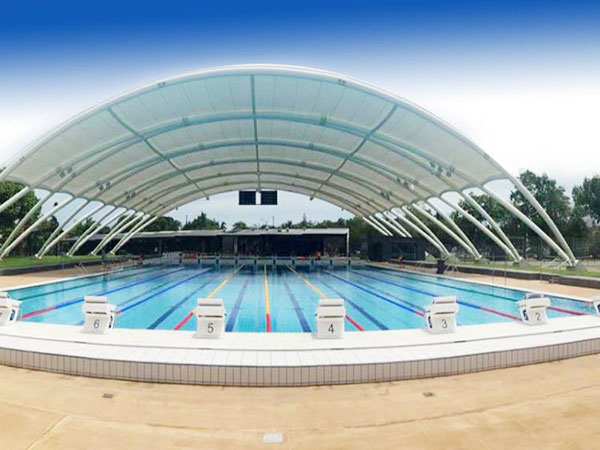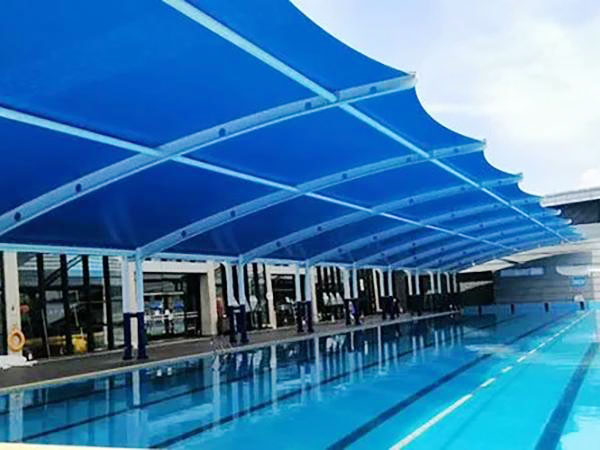Tensile fabric structure of swimming pool: selection of membrane materials
In modern architectural design, tensile fabric structure has gradually become the first choice for many public places with its unique form and functionality. Among them, swimming pools are important places for people to relax and entertain, and their functional needs such as sunshade and rain protection make tensile fabric structures widely used. So, what kind of membrane materials should be used for the tensile fabric structure of swimming pools?
1. Principles and characteristics of tensile fabric structure
Tensile fabric structure, also known as tensile membrane structure, is a form of construction with fabric as covering material. It uses the interaction between rigid frame and flexible membrane material to form a stable structural system by tensioning and fixing membrane material. This structural form has the advantages of light weight, large span, beautiful shape, good light transmittance, etc., and has been widely used in swimming pools, gymnasiums and other places.

2. Selection principles of tensile fabric structure membrane materials for swimming pools
- Durability: Swimming pools are usually in a humid environment, so the membrane material needs to have good water resistance, corrosion resistance and anti-aging properties to ensure the long-term use of the structure.
- Safety: The membrane material should have high tensile strength and tear strength to withstand the influence of natural forces such as wind and snow to ensure the safety of the structure.
- Light transmittance: Appropriate light transmittance can increase the lighting of the swimming pool and improve the swimming experience. At the same time, membrane materials with good light transmittance can also reduce the use of lighting equipment and reduce energy consumption.
- Aesthetics: The appearance characteristics of the membrane material such as color and texture should be coordinated with the overall style of the swimming pool to create a comfortable and beautiful swimming environment.
3. Commonly used membrane types and their characteristics
- PVC membrane material: PVC membrane material has excellent water resistance, corrosion resistance and aging resistance, and the price is relatively low. However, its light transmittance and tensile strength are relatively low, and it may be necessary to increase the stability of the structure during design.
- PTFE membrane material: PTFE membrane material has extremely high light transmittance and self-cleaning properties, and can maintain a clean appearance for a long time. At the same time, its tensile strength and tear strength are also high, which is suitable for large-span structures. However, the price of PTFE membrane material is relatively high.
- ETFE membrane material: ETFE membrane material is a high-performance fluoroplastic membrane material with excellent light transmittance, weather resistance and corrosion resistance. Its unique structure makes the membrane surface less prone to dust accumulation and easy to clean. ETFE membranes are moderately priced and suitable for tensile fabric structures of swimming pools of all sizes.

4. Summary and Suggestions
When selecting membrane materials for tensile fabric structures of swimming pools, factors such as durability, safety, light transmittance and aesthetics need to be considered comprehensively. For swimming pools of general size, PVC membrane materials may be a more economical choice. For large and high-end swimming pools, PTFE or ETFE membrane materials can better meet their functional and aesthetic needs. In addition, it is recommended to fully consider local climate conditions and use environment when selecting membrane materials to ensure the long-term use of the structure.
With the continuous advancement of science and technology and the continuous development of membrane technology, the tensile fabric structure of swimming pools in the future will present more diversified and personalized characteristics. We look forward to more innovative materials and technologies being applied to this field to bring people a more comfortable and beautiful swimming experience.